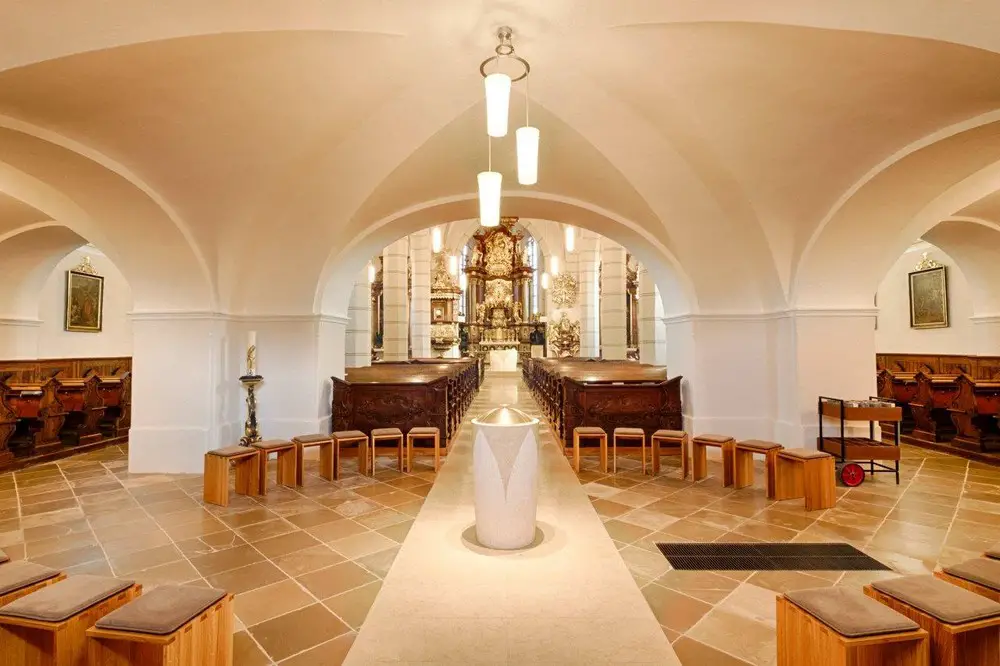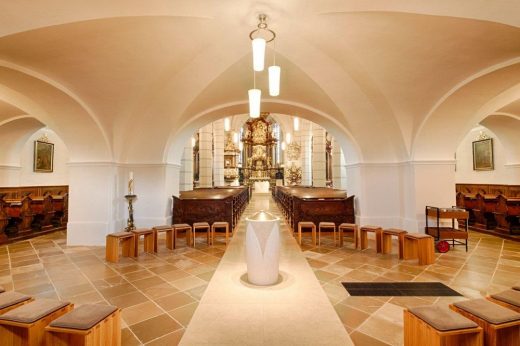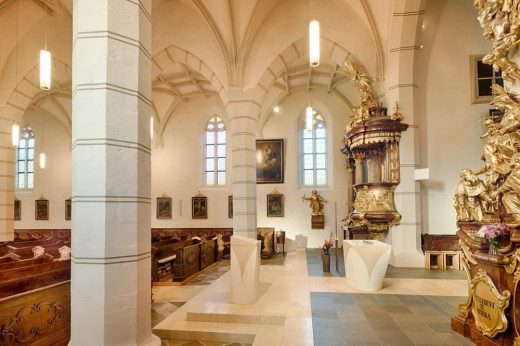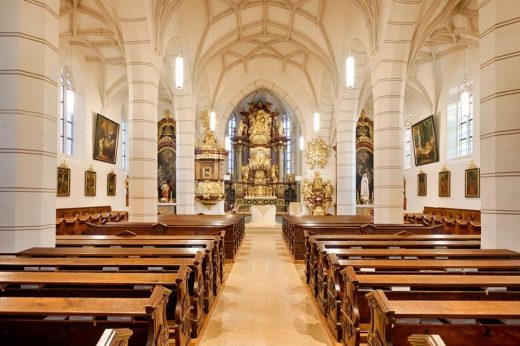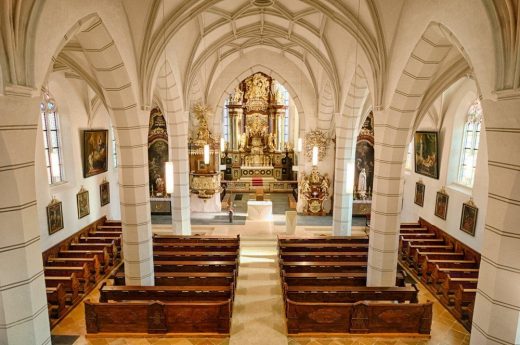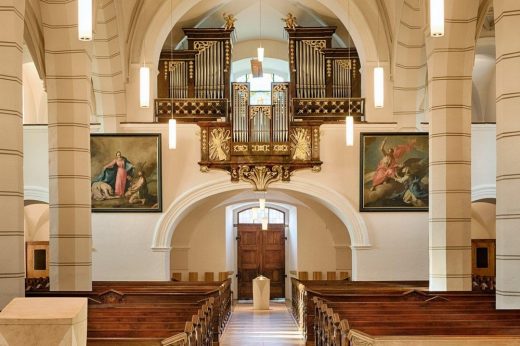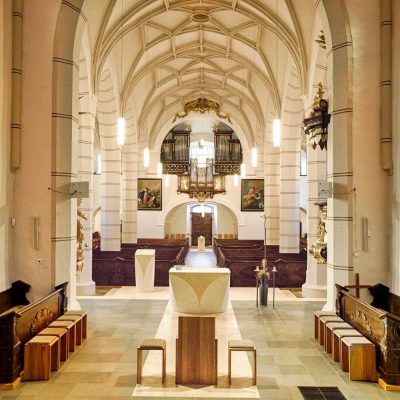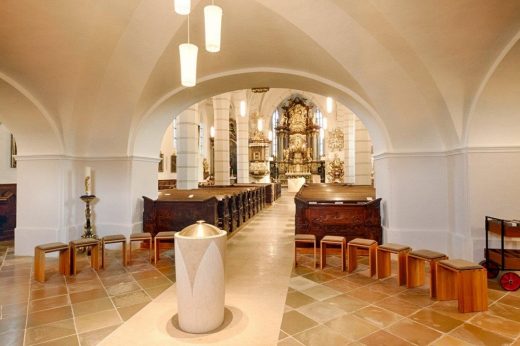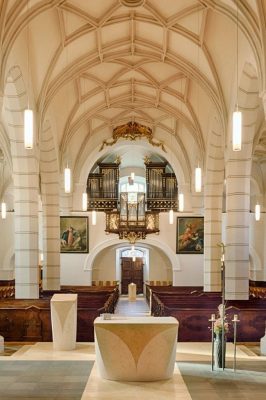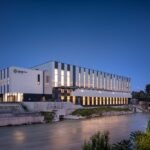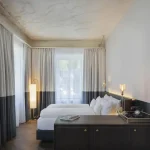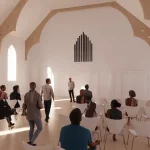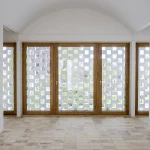Parish church in Mank Building News, Melk Architecture Design Images
Parish church in Mank, Austria
12 Aug 2020
Mank Parish Church Building
Design: X Architekten
Location: Mank, district of Melk, Lower Austria
Photos by LITE Studio
The parish of Mank and the archdiocese of St. Pölten announced the design competition for the new definition of the liturgical places in the parish and pilgrimage church of Mank. With the upcoming renovation of the church the liturgical and functional conditions should also be improved. In general it is about the adaptation of the space in the sense of the Second Vatican Council. The design is by xarchitekten.
In particular, the existing people’s altar was located behind the triumphal arch in the narrow choir, making it difficult for the priest to have contact with the parish in the hall. At funerals there was too little space for laying out in front of the altar. At baptisms there was too little space around the baptismal font and the location of the baptismal font was felt to be too unworthy. For the baptismal font a new area should be created. The rows of benches running up to the altar platform prevent movement in the church between the individual locations, for example between the side altars.
Historical spatial systems
The one-bay choir built around 1400 and the late Gothic three-aisled four-bay staggered hall with three naves is completely dominated by Gothic elements. Impressive structural elements such as ribbed vaults, octagonal pillars, vault shells and net stars span the space. They are the outer shell, the all-dominant perimeter of the parish church of Mank.
In the baroque period, new architectures were added to the Gothic form with new inwardly projecting architectures. The main actors are the altars, the large central high altar in the apse and the two side altars in the side aisles. The Baroque forms are inscribed in the Gothic space, creating a complex and dynamic overlap between Gothic and Baroque.
It did not seem possible to us to supplement this extremely complete but also quite successful overlapping by a further intervention in the room without the danger of overloading it. The only place without creative determination was the floor of the church.
The dominant liturgical orientation along the longitudinal axis towards the high altar was the undisputed room model until the Second Vatican Council. The priest prayed with his back to the congregation towards the high altar at the end of the room in the apse. Today, the altar and the ceremony are ideally placed in the middle of the room so that those celebrating together can experience themselves as being gathered around the altar. A room structure must be developed for this.
Concept of the inscribed architecture
The new liturgical objects altar, ambo and sessio as well as the lecturing cross, the Easter candle and the baptismal font have a potential as a whole, as a network or as an archipelago, which can be made useable for the project.
A figure is inscribed on the floor, i.e. the not yet designed area of the church interior, which contains all liturgical places and runs lengthwise through the church interior, thus being in the middle of the parish.
In this way a new correspondence to Matthew 18:20 “For where two or three are gathered in my name, there am I among them.”
The community gathers on this new figure for christening, holy communion and the final goodbye to the laid out deceased.
In terms of architecture, the floor figure with the liturgical places complements the spatial coexistence of Gothic and Baroque with an intervention on the surface. The church space is completed, a new layer of meaning is inserted.
Technical execution
According to the concept, the altar, the ambo, the baptismal font and the floor figure are made of the same stone.
Parish church in Mank – Building Information
Location: Mank
Client: Pfarre Mank
Planning: X ARCHITEKTEN & Josef Colz
Lights: LITE Studio
Useful area: ca.400m²
Competition 2016
Finalization 2018
Photos: LITE Studio
X ARCHITEKTEN
Vienna 31.7.2020
Company’s founders
David Birgmann (* 1973)
Study of architecture at the TU in Innsbruck
2001 Diploma with Stefano de Martino
Bettina Brunner (* 1972)
Studied architecture at the TU in Graz, graduated in 1998
1999 – 2004 Assistant at the Institute for Structural Engineering and Experimental Architecture, University of Innsbruck – Volker Giencke
Lorenz Prommegger (* 1969)
Study of architecture at the TU in Graz, diploma 1997
Study of real estate economics at the FHW Vienna, diploma 2006
1998 – 2002 Lectureships at the TU Vienna and TU Graz
2001 Visiting professor at the Academy of Art, Rotterdam
2004 Consulting activity project development
Max Nirnberger (* 1962)
Studied architecture at the TU in Graz, graduated in 1998
1998 – 2000 Assistant lecturer at the Institute for Structural Engineering, TU Vienna – Will Alsop
2000 – 2005 Assistant at the Art University Linz – Roland Gnaiger
X ARCHITEKTEN is a group of committed architects who develop conceptual positions on contemporary architecture in project-related work. As a mathematical variable, X stands for openness. The X encourages pluralism: the team with flat hierarchy replaces the professional image of the architect as a lone fighter. The dynamics of a permanent work process, oscillating between creativity and (self-)criticism, allows quality to emerge that goes beyond the capacity of the individual.
Parish church in Mank, Austria Building images / information from X Architekten
Location: Upper Austria
New Architecture in Austria
Contemporary Austrian Architecture
Office for Pastoral Care in Linz
Design: xarchitekten
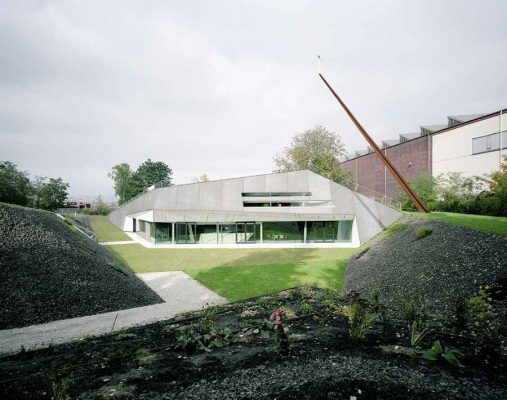
photograph : David Schreyer
OASIS Linz Building
house e
Design: Caramel Architekten
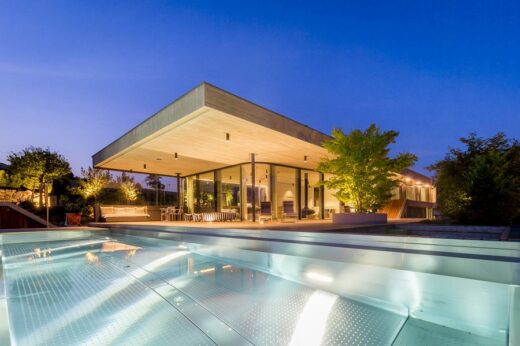
photo : Martin Pröll and Caramel
Musiktheater
Design: Terry Pawson Architects
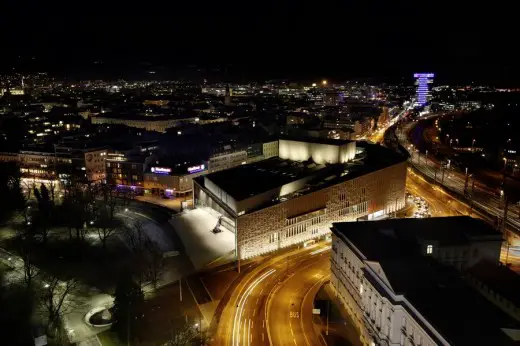
photo : Helmut Lackner
Musiktheater in Linz
Verkaufs- und Finanzzentrale voest alpine Stahl Gmbh
Dietmar Feichtinger Architectes
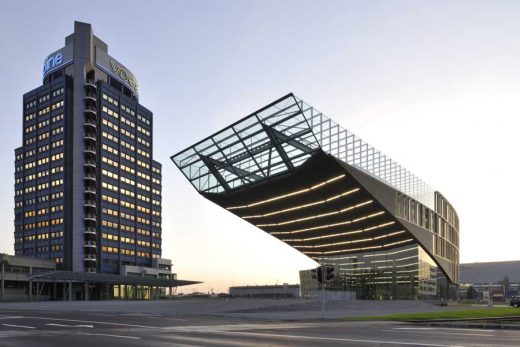
photograph © Josef Pausch
Voest Steelworks Linz
Juwelry Mayrhofer
Design: xarchitekten
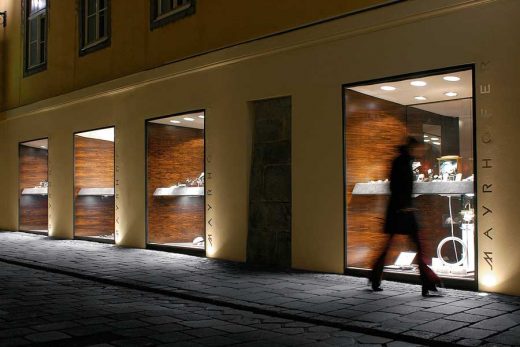
pictures : Max Nirnberger, Lorenz Prommegger
Linz Store
Austrian Architecture
Intercity Vienna
Design: SADAR+VUGA
Intercity Vienna
Bergisel Ski Jump, Innsbruck, Tyrol
Design: Zaha Hadid Architects
Bergisel Ski Jump
Comments / photos for the Parish church Mank – Austria Architecture page welcome

